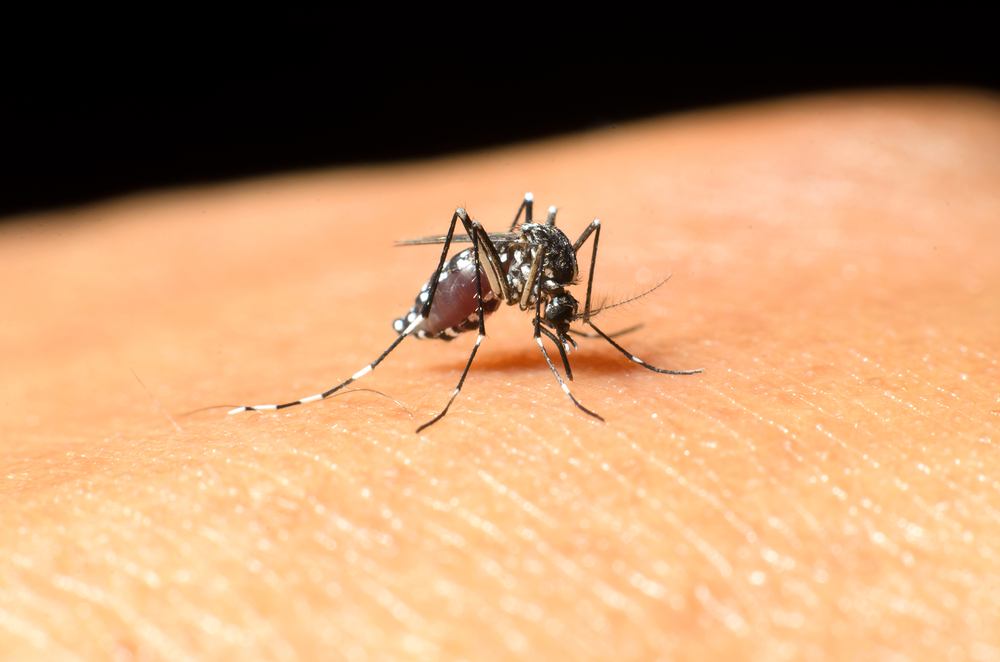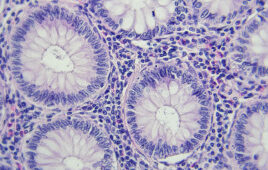
UT Southwestern researchers today report the first use of CRISPR genome-wide screening to identify a gene that helps cells resist flavivirus infection. That nasty class of pathogens includes West Nile virus, dengue fever, Zika virus, and yellow fever.
In a study published in Nature Microbiology, the team led by Dr. John Schoggins, Assistant Professor of Microbiology, used the cutting-edge CRISPR technology to identify the IFI6 gene as a potent antiviral gene targeting flaviviruses. The researchers then used traditional cell culture studies to confirm the gene’s role in protecting against infection by Zika, West Nile, dengue, and yellow fever viruses.
“Other studies have used CRISPR genetic screens to identify cellular genes that are required for flavivirus infection. Our study is the first to use this technology to identify cellular genes that inhibit infection,” said Dr. Schoggins, a Nancy Cain and Jeffrey A. Marcus Scholar in Medical Research, in Honor of Dr. Bill S. Vowell, and a Clayton Foundation Investigator.
“In mammals, cells naturally defend against viral infection through interferon, a molecule that sets off a warning system that a virus has been detected and that the cells need to engage their viral defense systems. The cells do this by activating hundreds of interferon-stimulated genes,” he said. “Flaviviruses cause substantial human disease, and interferon is involved in the body’s innate immune response to these viruses.”
Dr. Schoggins said the team used recently developed genome-wide CRISPR screening technology to identify which of the interferon-induced genes played a major role in suppressing flavivirus infection. He praised the work of graduate student and lead author Blake Richardson and of co-author Dr. Maikke Ohlson, a senior research scientist in his laboratory. “Blake performed all the phenotypic and mechanistic work on how IFI6inhibits flaviviruses and Dr. Ohlson performed the CRISPR screen that allowed us to uncover IFI6 as a potent suppressor of flavivirus infection,” he said.
“In the CRISPR screen, we used human liver cells and knocked out every gene in the genome – about 19,000 genes – one at a time. We then stimulated the cells with interferon, knowing that this stimulation would normally allow the cells to resist viral infection. For the cells that did not resist infection – because they were missing a gene due to the CRISPR knockout – we used next-generation sequencing to figure out the identity of the relevant genes,” he said.
Dr. Schoggins explained that the CRISPR gene-editing technology made such a study extremely efficient, uncovering the prominent flavivirus-inhibiting role of IFI6.
“The brilliance of the technology is that all of these CRISPR-targeted cells are pooled together in just a few big cell culture dishes. The cells are also bar-coded so you know which gene is missing from each cell when you observe how they respond to the addition of interferon,” he said.
“The technology is super cool,” he added.
In cell culture studies, the IFI6 gene – apparently working via its protein product, also called IFI6 – inhibited yellow fever, a flavivirus known to infect the liver. Cells with a working IFI6 gene also inhibited dengue, Zika, and West Nile viruses, he said. The researchers confirmed those results in liver cells by repeating the experiment in kidney and skin cell lines and in neurons.
Future work will entail drilling down into the molecular mechanism of the IFI6 protein, with the hope that this knowledge may provide a foundation for developing therapies that could target flavivirus infection.
Sporadic West Nile cases have been reported this summer in the United States, he said, adding, “Zika has waned, but I think people still remember it quite well; dengue is an ongoing problem in tropical climates, and there’s currently an outbreak of yellow fever virus in Brazil.”
In earlier studies, Dr. Schoggins and other researchers identified other possible flavivirus resistance proteins using non-CRISPR screening techniques, but the CRISPR technology makes IFI6 appear to play a more prominent role, he said.
Questions still to be answered include whether CRISPR screens in other cell types would give different results. This study focused on liver cells because it began as an investigation of yellow fever, which is known to attack the liver. Zika is known to affect cells in the brain but CRISPR genetic screening in neurons presents logistical challenges, he explained.
UTSW co-authors include research assistant Jennifer Eitson, former summer undergraduate research fellow Matthew McDougal, graduate students Ian Boys and Katrina Mar, and Medical Science Training Program (MSTP) dual M.D./Ph.D. student Pamela De La Cruz Rivera, all of Microbiology; computational biologist Ashwani Kumar; Dr. Chao Xing, Associate Professor, Department of Clinical Sciences and Eugene McDermott Center for Human Growth and Development, and Director of the McDermott Center Bioinformatics Core; as well as research technician Connor Douglas and Dr. Genevieve Konopka, Associate Professor, both of Neuroscience.
The research received support the National Institutes of Health, the Rita Allen Foundation, the Clayton Foundation for Research, and the National Science Foundation. The study also got technical support from UT Southwestern’s Live Cell Imaging Core and the Electron Microscopy Core.
Filed Under: Genomics/Proteomics




